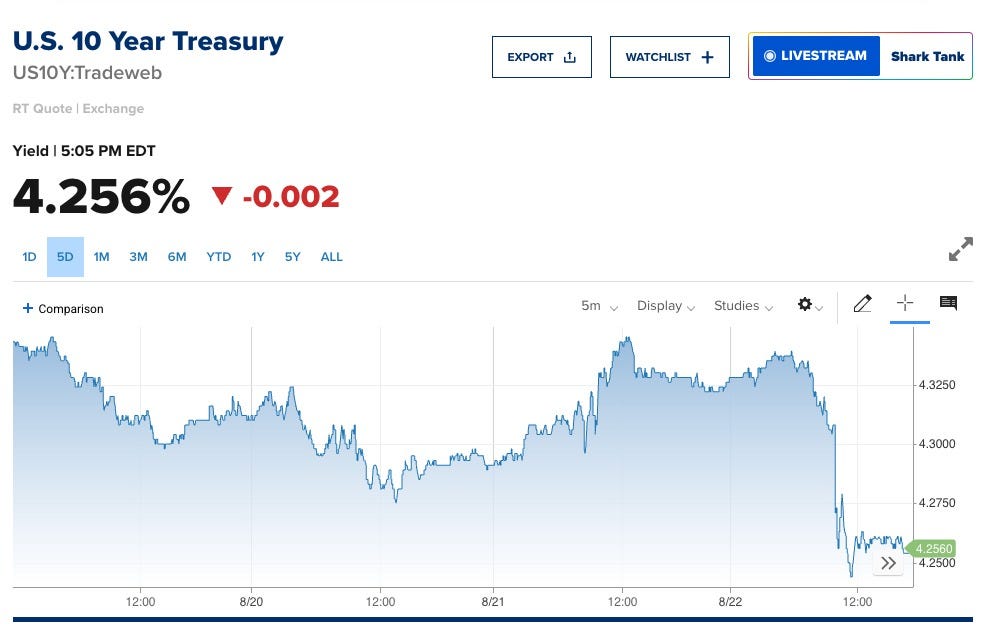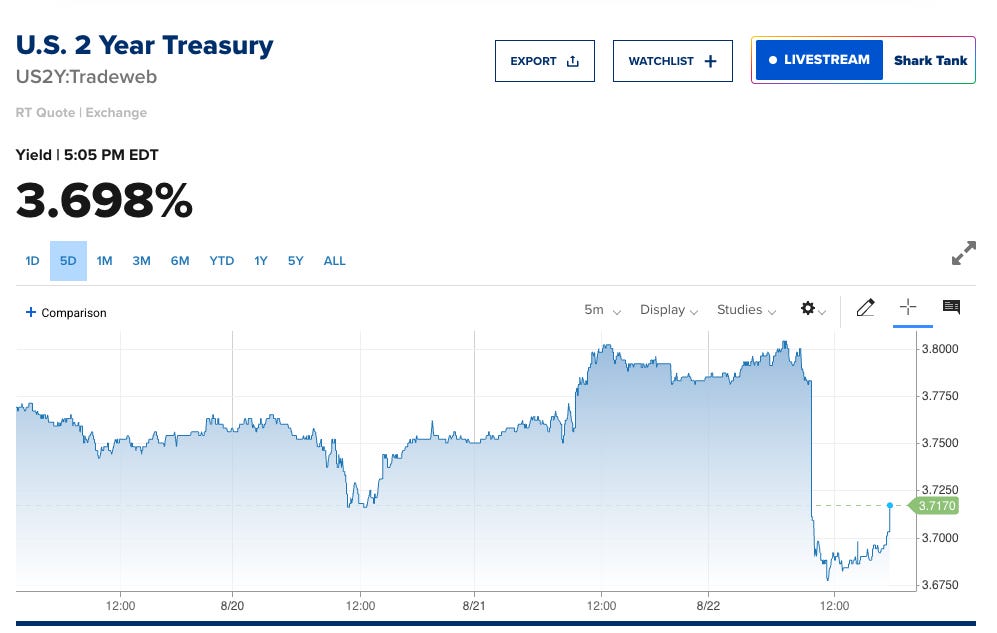“When the game is rigged, it’s not the players you should watch…it’s the referee.”
The Setup Nobody Saw Coming
Imagine waking up to a world where the Federal Reserve…the all-powerful referee of money itself…suddenly decides to change the rules mid-game.
One day it’s all about crushing inflation, come hell or high water. The next, it’s about protecting jobs. Same Fed. Same chair. Entirely different story.
That’s what happened last Friday in Jackson Hole.

Instead of the hawkish chest-thumping markets had braced for, Jerome Powell delivered a speech laced with worry for the labor market. He all but admitted inflation was no longer public enemy number one.
Bond traders went berserk. Stocks roared. Bitcoin bolted like a racehorse and then face-planted over the weekend. Gold stayed unbothered. The dollar slipped. Oil climbed.
The question is simple, yet unsettling: was this the dawn of a new era of easy money… or just noise dressed up as news? The answer, as always, lies beneath the surface.
Shockwaves in the Bond Market
Bond markets don’t lie. They’re the quiet giants of finance, rarely prone to hysteria.
But when Powell’s words hit the tape, the 10-year Treasury yield…which had started the day near 4.34%…plunged six to seven basis points in a straight line.
No bounce. No hesitation. A controlled demolition.
The 2-year yield fell even harder. That move steepened the yield curve, a pattern traders call a “bull steepener.”
Translation: markets expect cuts. Not someday. Not maybe. Soon.
Within hours, the CME FedWatch Tool…Wall Street’s scoreboard for Fed odds…showed an 87.3% chance of a September rate cut.
That morning, it was 75%. A month earlier, just 58%.
Markets don’t swing probabilities like that unless they believe the referee has shown his hand.
The conviction was clear: cuts are coming. But if the whole stadium already knows the play, what’s left when the whistle blows?
Ripples Across Every Asset Class
The tremors didn’t stop at Treasuries.
The Dollar (DXY): Cracked lower. With U.S. rates now expected to fall faster than those abroad, the greenback lost its edge.
Gold: Unimpressed. It barely flinched, as though it had heard the same Fed song too many times before.
Oil: Surged, feeding off the risk-on mood. Lower rates often mean cheaper credit, more growth, more demand.
Bitcoin: Pure chaos. It ripped higher immediately after Powell’s pivot, surging off earlier lows near $112,000. Then, in classic crypto fashion, it gave much of it back over the weekend.

With Bitcoin’s retreat over the weekend, the glow of Powell’s pivot may not last.
The surge in risk appetite that carried equities higher could face its first test when markets reopen.
Monday looms as a reality check: was Bitcoin flashing an early warning of broader weakness, or was it simply being its unpredictable, volatile self?
And looming ahead: Friday’s release of Core PCE, the Fed’s favored inflation gauge.
Powell had effectively pre-committed. If PCE came in hot, his pivot would look premature.
If it came in cool, he’d look prescient. Either way, the market braced for whiplash.
But before staring at PCE, it’s worth asking: do these cuts even matter anymore?
The Ghost of September 2024
History has a nasty habit of humbling central bankers. Flash back just one year.
In September 2024, the Fed fired its biggest bullet in years…a full 100 basis points of cuts delivered over a few months.
Did mortgage rates collapse, as textbooks say they should? Hardly.
They went the other way, jumping 50 to 60 basis points higher. Families hoping for relief watched housing slip further out of reach.
Why? Because long-term yields refused to play along.
The 10-year Treasury rose, powered not by Fed scissors but by expectations for growth and inflation. Mortgages, tied to those long yields, followed.
If a full percentage point of easing couldn’t tame the mortgage market then, what miracle lies in a measly quarter-point now? Perhaps none. The Fed may pivot. Rates may fall. But the real levers of credit lie beyond Powell’s reach.
So if rate cuts aren’t the savior, what is? To answer that, we must understand how market edges have evolved…and why most investors are fighting the wrong battle.
From Secrets to Circuits: The Evolution of Market Edges
In the 1980s, the edge was information. If you got the numbers before others, you won.
Insider calls, early faxes, whispered tips…that’s how fortunes were made.
In the 1990s, Bloomberg terminals democratized data. Suddenly, everyone had access. The edge shifted to analysis…who could interpret faster, smarter, deeper.
Today, the game has mutated again. Algorithms, not humans, hold the edge.
They devour satellite images, scrape social feeds, parse earnings transcripts in milliseconds. Some predict trades from patterns invisible to the naked eye.
For the average investor, it’s like showing up to a Formula 1 race on a tricycle. You can pedal hard, but you’re not catching the pack.
And yet…there’s hope. A set of timeless rules, written more than 30 years ago, still apply.
They don’t rely on insider info, fancy terminals, or quantum-speed algorithms.
They rely on human discipline. They’re old, yes. But they’re undefeated.
Shall we open the vault?















